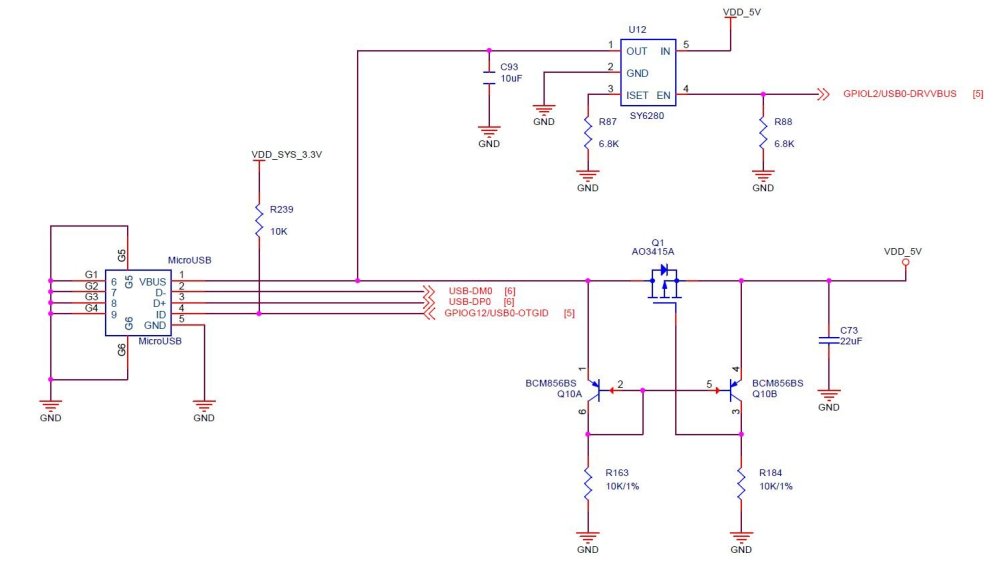
mdrmdr
Members-
Posts
33 -
Joined
-
Last visited
Recent Profile Visitors
-
Why is it always the case that after asking for help, you keep looking and then you find the solution? 😉 The SD boots using the instructions on this page: https://docs.armbian.com/User-Guide_Recovery/#flashing-boot-loader In my case using this U-Boot files: https://mirrors.dotsrc.org/armbian-apt/pool/main/l/linux-u-boot-nanopineo-current/ Maybe this helps someone having the same issue. Update question: Maybe one can answer that: I did use u-boot-sunxi-with-spl.bin from the above URL, which works perfectly well. Why does the same file from https://ftp.de.debian.org/debian/dists/bullseye/main/installer-armhf/current/images/u-boot/NanoPiNeo/ not work? With the one from the Debian site, the NanoPi does not boot. To write I use: dd if=u-boot-sunxi-with-spl.bin of=/dev/sda bs=8k seek=1 Update 2: Guess I found my error. The Debian U-Boot file is just not made for an NanoPi Neo running Armbian. I'm now using the one which comes with the installation, which is /usr/lib/linux-u-boot-current-nanopineo/u-boot-sunxi-with-spl.bin. This works fine.
-
I have a NanoPi Neo V1.4 running Armbian 23.8.1 bullseye with kernel nanopineo 6.1.63-current-sunxi. Now, that I got my micro-USB port working for a SD card holder, I want to programmatically backup my boot SD on a regular base to another SD. Yes, it works by a full dd-copy. but this is quite time consuming and I want to skip some directories while backup, which does not work with dd. The idea: Take a new SD (same model as source SD) Create a new partition table and a primary partition 1 with fully equal parameters as my source SD Format partition 1 with ext4 and mount to /mnt rsync all files (exclude some directories as e.g. /var/log) from source / to target / (which is /mnt/) Use this SD in case of a problem with the source SD as new boot SD In /boot/armbianEnv.txt i have rootdev=/dev/mmcblk0p1. No UUID used. But, it just does not boot. The LED's of my NanoPi stay on with no blinking at all. Nothing is written to /var/log. Unfortunately I cannot connect a console to the NanoPi to see the boot messages. Only SSH at this time. What is missing on the new SD? I assume something with the U-Boot bootloader? Can anybody help me? What is missing and needs to be copied to the SD? I assume to the bytes 512-8192 just in front of partition 1 and after the partition table. Even that a full dd works, I'd like to know how to do that manually. Thanks a lot for help 🙂
-

NanoPi Neo V1.4 1801 / enable Micro-USB port as USB-host
mdrmdr replied to mdrmdr's topic in Allwinner sunxi
Using a device tree overlay works well 👍 But with dr_mode="otg", I still need the GPIO commands to activate the micro-USB port for an USB-stick I think this would work if I'd connect a host. But for a peripheral as an USB-stick, I first need to apply the 5V, which is, according the schematics, done with GPIO PL2. And, opened an issue for the armbian-config problem I had: https://github.com/armbian/config/issues/214 Anyway, thanks a lot for your tips. I'm happy that I can now use an USB device to backup my live system/boot SD card from the NanoPi Neo without removing it. -

NanoPi Neo V1.4 1801 / enable Micro-USB port as USB-host
mdrmdr replied to mdrmdr's topic in Allwinner sunxi
Thanks 🙂 will try both suggestions tomorrow -

NanoPi Neo V1.4 1801 / enable Micro-USB port as USB-host
mdrmdr replied to mdrmdr's topic in Allwinner sunxi
Success 🙂 I could connect an USB stick now to the micro-USB port on my NanoPi Neo and read/write to it. I'm now on Armbian 23.8.1 bullseye with kernel 6.1.63-current-sunxi as my productive NanoPi Neo runs a HomeGear Gateway, which only works up to bullseye. Just 3 small changes in the device tree file sun8i-h3-nanopi-neo.dtb and armbianEnv.txt were required (just changes are shown): usb@1c19000 { #dr_mode = "peripheral"; dr_mode = "host"; }; usb0-vbus { #status = "disabled"; status = "okay"; }; Nano$ cat armbianEnv.txt overlays=spi-spidev usbhost0 usbhost1 usbhost2 param_usb0_mode=0 And on the command line: # make pin PL2 controllable echo "354" | sudo tee /sys/class/gpio/export # set pin as output echo "out" sudo tee /sys/class/gpio/gpio354/direction # turn on micro-usb echo "1" | sudo tee /sys/class/gpio/gpio354/value # turn off mircro-usb echo "0" | sudo tee /sys/class/gpio/gpio354/value I found all this information here. While testing, I found a small issue with armbian-config: If have 2 .dtb files on my system which contain my board name nanopi-neo in the filename: Nano$ ls -1 /boot/dtb/*nanopi-neo* /boot/dtb/sun8i-h3-nanopi-neo-air.dtb /boot/dtb/sun8i-h3-nanopi-neo.dtb The code in /usr/lib/armbian-config/jobs.sh which searches for the proper .dtb file, finds the wrong - first - file. Which is sun8i-h3-nanopi-neo-air.dtb in my case. for dtb in ${dtb_path}/*.dtb do if [[ $dtb == *"${board_name}"* ]]; then used_dtb=$dtb break fi done I modified the if [[ ]]; then line to find the correct file: for dtb in ${dtb_path}/*.dtb do if [[ $dtb == *"${board_name}.dtb" ]]; then used_dtb=$dtb break fi done I'm not sure if the mask *<board name>.dtb can be applied generally, but it works in my case. -
I'm powering my NanoPi Neo V1.4 1801 through the USB type A port beside the Ethernet RJ45. I'm using Armbian 23.11.1 bookworm with kernel Linux nanopineo 6.1.63-current-sunxi. Now I want to enable the Micro-USB port (usually used for powering) to act as an USB host so that I can plugin an USB-stick. I found very few instructions for e.g. Orange Pi. There the device tree needs to be changed for usb@1c19000 and usb0-vbus. Also in armbianEnv.txt the line param_usb0_mode=0 should be added. But none of the instructions work for my NanoPi Neo. In the schematics, a SY6280 is connected via GPIOL2/USB0-DRVVBUS to the H3 cpu. This should theoretically allow the NanoPi Neo to apply the 5V internally to the Micro-USB port. But how? Can please anybody post complete instructions how to enable the Micro-USB Port as an fully working USB host port? PS: The tag for this post is wrong, but I could not add another one...
-

NanoPi NEO LEDs not working with Linux 5.15.25-sunxi (Armbian 22.02.1)
mdrmdr replied to Jake7's topic in Allwinner sunxi
Same here. LEDs seems to not work anymore. In my case with Armbian 22.05.1 and Linux 5.15.43 on a NanoPi Neo. I always switched the LEDs off at boot with: echo 0 > /sys/class/leds/nanopi:red:pwr/brightness echo 0 > /sys/class/leds/nanopi:green:status/brightness Those files now do not exist anymore. Directory /sys/class/leds/ is empty. Since I like to have the LEDs off anyway, it's not a problem for me but nevertheless it might be a bug in the kernel. -

5.15.25 breaks SPI on NanoPi Neo and does not create /dev/spidev0.0
mdrmdr replied to mdrmdr's topic in Allwinner sunxi
"current" 5.15.35 / 22.05.0 works without any problems on my Nano 😀 An apt-get upgrade want's to upgrade linux-image-edge-sunxi. Should that be done? Or does it upgrade and switch again to 5.17 as active kernel? -

5.15.25 breaks SPI on NanoPi Neo and does not create /dev/spidev0.0
mdrmdr replied to mdrmdr's topic in Allwinner sunxi
I will, but maybe not until the weekend... -

5.15.25 breaks SPI on NanoPi Neo and does not create /dev/spidev0.0
mdrmdr replied to mdrmdr's topic in Allwinner sunxi
@going Ok, I still do not have a complete picture how to properly return to the standard way of kernel updates (which requires the dtb package) once the fix is included in the update packages. I assume this: Uninstall linux-image-edge-sunxi (which is the test kernel fixing the SPI bug) Does this remove also the zz-sync-dtb script? Does this remove also the /usr/lib/linux-image-5.17.5-sunxi directory with the test dtb files which are synced to /boot/dtb-5.17.5-sunxi with the above script? Does this remove also the /boot/dtb-5.17.5-sunxi? directory with also dtb files? Check if the links in /boot correctly point to still installed linux-(image|dtb)-current-sunxi (5.10.98) files Un-hold the linux-(image|dtb)-current-sunxi packages Reboot Now: How do I find out when the SPI fix is included into the "current" or the "edge" packages? Is the fix automatically included once the "current" version reaches at least 5.17.5? Or should/must I change to the "edge" packages Available packages are: Nano$ apt-cache search linux-image-.*-sunxi linux-image-current-sunxi - Linux kernel, armbian version 5.15.25-sunxi current linux-image-edge-sunxi - Linux kernel, armbian version 5.17.5-sunxi edge linux-image-legacy-sunxi - Linux kernel, version 5.4.88-sunxi I'm pretty new to this kernel things and still learning... 😉 -

5.15.25 breaks SPI on NanoPi Neo and does not create /dev/spidev0.0
mdrmdr replied to mdrmdr's topic in Allwinner sunxi
@going So I do not need the dtb package anymore at all? -

5.15.25 breaks SPI on NanoPi Neo and does not create /dev/spidev0.0
mdrmdr replied to mdrmdr's topic in Allwinner sunxi
Command returns: linux-dtb-current-sunxi/buster 22.02.1 armhf [upgradable from: 22.02.0-trunk.0029] linux-image-current-sunxi/buster 22.02.1 armhf [upgradable from: 22.02.0-trunk.0029] linux-image-edge-sunxi/buster 22.05.0-trunk.0038 armhf [upgradable from: 22.05.0-trunk] So I would upgrade package linux-image-edge-sunxi and install linux-dtb-edge-sunxi. And optionally remove linux-dtb-current-sunxi and linux-image-current-sunxi (which is 5.10.98; both on hold currently). Correct? -

5.15.25 breaks SPI on NanoPi Neo and does not create /dev/spidev0.0
mdrmdr replied to mdrmdr's topic in Allwinner sunxi
Still works fine. Also with some reboots. What needs to be done to return to the standard kernel upgrade path to upgrade from current installed 5.10.98 (linux-image-current-sunxi) to 5.17.*? Uninstall the .deb and then just run apt-get update? -

5.15.25 breaks SPI on NanoPi Neo and does not create /dev/spidev0.0
mdrmdr replied to mdrmdr's topic in Allwinner sunxi
Ok, will do. So far everything fine -

5.15.25 breaks SPI on NanoPi Neo and does not create /dev/spidev0.0
mdrmdr replied to mdrmdr's topic in Allwinner sunxi
Seems to work 😀 /dev/spidev0.0 is created. The SPI device CC1101 and therefore the Homegear gateway initializes fine. What else information do you need? dmesg output? Logfiles? Small change in your instructions: cd deb must be cd deb/nanopineo


